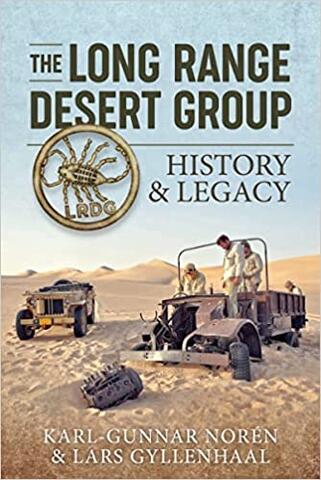The Long Range Desert Group

The Long Range Desert Group is packed with tremendous detail for such a modestly sized book, and is one I very much recommend.
The book is organized into two parts (each broken down into easily digestible sections of six to twelve pages). Part One covers the formation of the Long Range Desert Group (LRDG), and the period of 1940-1943 when it operated in North Africa as part of the Allied forces then fighting the Axis armies in mostly Libya and Egypt. Part Two is a much briefer look at the author's 2012 retracing of the LRDG's patrol paths.
What makes this book interesting is not only the story as to how one of the world's first special forces units was formed (a forerunner and contemporary to the Special Air Services), but also in the details provided. The authors do a tremendous job showing what it really meant to conduct small unit long-range motorized military operations behind enemy lines in the Sahara. From the technical details of the all-important trucks and jeeps; to the weaponry; to navigation techniques; supply concerns; tactics for avoiding enemy aircraft; to simply surviving in the unforgiving desert for weeks at a time - this book provides the reader a unique look and feel for what it was to be involved in such a special unit.
This book is also an adventure story. The unit's formation was from the unlikeliest sources - driven as it was by civilian explorers and adventurers with detailed knowledge of the region. These were men who were crucially encouraged, supported, and given what they needed by the open-minded British General Archibald Wavell. Together this team of civilians (including those returning to military life), active-duty soldiers from across the British Commonwealth (especially from New Zealand), and Wavell would create a force that would give the Germans and Italians fits during the 1940-1942 peak of the LRDG's effectiveness. The book features a number of daring raids, and stories of survival against all odds.
As for the relatively short Part II that wraps up the book's final dozen pages; all I can say is how jealous I am of the authors who were able to go on their own journey across Egypt during April of 2012. In this journey of more than a little risk they found many artifacts from the war and experienced the kind of adventure most would aspire to some day take part in. Doing so in historically accurate vehicles to boot. The book's maps are excellent, and it features a considerable number of detailed photographs that help bring the text to life. If this is a topic that you've often wondered about, then I couldn't think of a better book to begin your own journey of discovery.



Post new comment